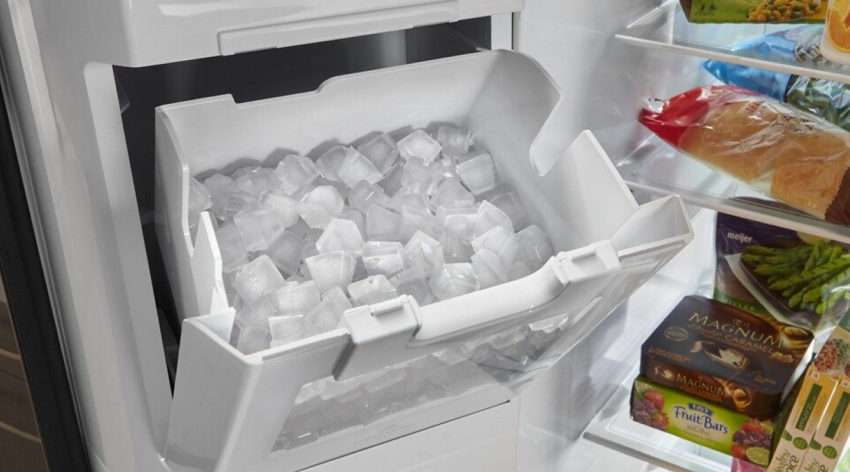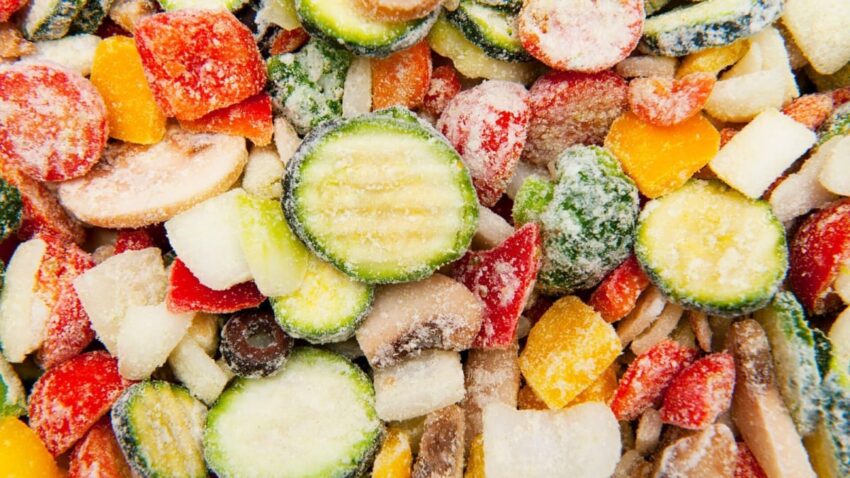
01 Jun Why Does My Fridge Keep Freezing Things?
When you open your refrigerator expecting refreshingly cool food and drinks, the last thing you want to encounter is frozen items. So, why does your fridge keep freezing things? It’s a frustrating situation that can lead to food spoilage, damaged containers, and a loss of freshness. In this article, we will delve into why my fridge keeps freezing things and provide you with practical solutions to address it.
A refrigerator is an essential appliance in any household, responsible for preserving the quality and freshness of our food items. However, sometimes it behaves unexpectedly, such as freezing the items meant to be chilled. Understanding why this happens is crucial for preventing further inconvenience and ensuring optimal fridge performance.
Understanding the phenomenon: Why does a fridge freeze things?

Image source: Google.com
Several factors can contribute to a refrigerator freezing items instead of maintaining the desired cool temperature. Let’s explore some common causes:
Temperature control and thermostat malfunction
One possible reason for your fridge’s freezing behavior is a malfunctioning thermostat. The thermostat is responsible for regulating the internal temperature, and if it fails to function correctly, the fridge may become excessively cold. This can lead to freezing items as the cooling system continues to operate beyond the desired temperature range.
Airflow restriction and ventilation issues
Proper airflow is crucial for maintaining consistent cooling throughout the refrigerator. When the airflow is restricted due to blocked vents or overcrowding, it can lead to uneven temperatures, with some areas becoming colder than others and potentially causing freezing. Additionally, ventilation issues can disrupt the air circulation within the refrigerator, resulting in irregular cooling patterns and freezing of food items. It’s worth noting that if you’re experiencing a problem where the fridge compressor starts then stops, it could indicate a separate issue related to the compressor’s functionality.
Incorrect placement of food items
How you arrange food items inside your fridge can also contribute to freezing. Placing items too close to the freezer compartment or in direct contact with cold surfaces can cause them to freeze. It’s important to organize your refrigerator strategically and avoid improper placement that may lead to temperature imbalances.
Faulty defrost system
Modern refrigerators have a defrost system to prevent ice and frost build-up. However, ice may accumulate excessively if this system malfunctions, resulting in an overly cold environment. Excess ice can disrupt the airflow and lead to the freezing of items stored in the fridge.
The impact of a freezing fridge
Dealing with a freezing fridge poses inconvenience and has several negative consequences. Let’s explore the impact it can have:
Food spoilage and waste
When food items freeze in the refrigerator, their quality and freshness are compromised. Certain fruits, vegetables, and dairy products may suffer texture changes and lose nutritional value. Additionally, freezing can cause cell damage, leading to a loss of taste and overall appeal. This often results in food waste as frozen items become unappetizing or inedible.
Reduced freshness and quality
Proper temperature control is vital for preserving the freshness and quality of perishable goods. Freezing can accelerate the deterioration process, diminishing the taste and texture of food items. Delicate produce, such as leafy greens and herbs, may wilt and become unusable when exposed to freezing temperatures.
Damaged containers and packaging
The expansion when water freezes can cause containers to crack or burst. This results in a messy refrigerator and poses a risk of contamination as liquids leak onto other food items. Additionally, frozen packaging materials may become brittle and prone to tearing, compromising the integrity of the stored items.
Troubleshooting tips for a freezing fridge
If your fridge keeps freezing things, here are some troubleshooting tips to help you address the issue:
Check the thermostat settings
Start by inspecting the thermostat settings and ensuring they are correctly adjusted. Make sure the temperature is set within the recommended range for refrigerator storage. If necessary, consult the user manual or contact the manufacturer for specific guidance on optimal temperature settings.
Ensure proper airflow and ventilation
Inspect the vents and air circulation paths within your refrigerator. Remove any obstructions, such as food packaging or misplaced items, that may impede the airflow. Moreover, ensure that the fridge is not pushed against the wall, which can hinder proper ventilation. Adequate airflow will help maintain consistent temperatures throughout the refrigerator.
Organize food items correctly
Take a moment to rearrange the contents of your fridge, ensuring the proper placement of different food items. Keep perishable items away from the coldest areas, such as the freezer compartment and back wall. Use designated shelves or drawers for specific food categories to minimize temperature imbalances and the risk of freezing.
Inspect and maintain the defrost system
Regularly check the condition of the defrost system in your refrigerator. If you notice excessive ice build-up, follow the manufacturer’s instructions for defrosting the unit. Clean any accumulated ice or frost and ensure the system is functioning correctly. If the problem persists, consider seeking professional assistance to repair or replace the defrost system.
Seek professional assistance if necessary
If your troubleshooting efforts do not resolve the freezing issue, it’s advisable to contact a professional appliance repair service. Certified technicians can diagnose the underlying problem and provide expert solutions tailored to your refrigerator model.
Preventive measures to avoid freezing in the fridge
Prevention is key when it comes to avoiding a freezing fridge. Here are some measures you can take to minimize the likelihood of encountering this issue:
Avoid overcrowding the fridge
Overcrowding your refrigerator restricts proper airflow and can lead to temperature imbalances. Be mindful of the number of items you store and ensure sufficient space for air circulation. Consider donating or discarding items past their expiration date or no longer needed to maintain optimal conditions inside the fridge.
Maintain appropriate temperature settings
Regularly monitor and adjust the temperature settings of your fridge to ensure they align with the recommended range. Remember that the optimal temperature may vary depending on the specific model and the food storage type. Consult the user manual or seek guidance from the manufacturer if you are unsure about the ideal settings.
Regularly clean and defrost the fridge
Performing regular cleaning and defrosting sessions is crucial for maintaining a well-functioning refrigerator. Remove spills or food debris promptly, as they can interfere with proper cooling and airflow. Defrosting the freezer compartment regularly prevents ice accumulation and helps maintain consistent temperatures throughout the fridge.
Monitor and regulate humidity levels
High humidity levels can contribute to excess moisture inside the fridge, leading to ice formation and freezing. Consider using a dehumidifier in the kitchen or placing moisture-absorbing materials, such as baking soda or activated charcoal, inside the refrigerator to control humidity levels. This will help prevent freezing and maintain the freshness of your food.
Conclusion
Dealing with a fridge that keeps freezing things can be a frustrating experience. However, by understanding the underlying causes and implementing the appropriate solutions, you can regain control over your refrigerator’s temperature and ensure your food stays fresh and properly preserved. Remember to check the thermostat, maintain airflow, organize food items correctly, inspect the defrost system, and seek professional assistance. By following preventive measures and implementing troubleshooting tips, you can enjoy a well-functioning fridge that keeps your food cool without freezing it.
You may like to read How to Apply Black Paint for Wooden Furniture



Sorry, the comment form is closed at this time.